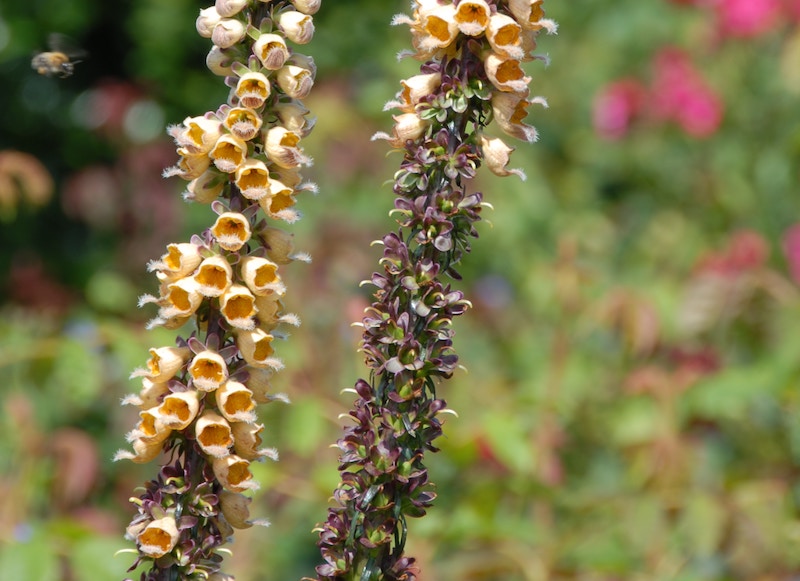Biennials and perennials plants do not require the same type of annual pruning that a shrub or tree may need. Deadheading and a hard cutting back are what help keep herbaceous perennials and biennials flowering and looking tidy through the summer growing season.

When to Prune Foxgloves
Foxglove blooms in the second year from the end of spring through the summer. Deadheading the spent flower spikes will be a regular chore during this period. Once the plant is ready to either go dormant for the winter or die back fully, cut back the plant in late fall or late winter before the garden comes to life in the spring. Foxglove will need to set seeds to carry on growing in your garden no matter if it is a biennial type or a perennial cultivar. Let the last flowers of the season set seed by not deadheading or cutting them back until late winter to ensure that the seed has been dispersed.
Why Prune Foxglove
Deadheading Foxgloves not only prevents them from self-seeding but may encourage side branching. The side branching will produce more flower spikes, although they may be smaller in size and appear much later in the summer. The short-lived perennial types, such as Digitalis grandiflora or the ‘Foxy’ hybrid cultivars, are more likely to produce blooms during the summer with regular deadheading.

How to Prune Foxglove
Step 1 - Deadhead spent flower spikes to prevent heavy self-seeding.
As soon as the flowers start to die back, cut off the flower spike at the base of the plant. Seeds begin to form quickly after the flowers have been pollinated. The flowers at the base of the flower spike will develop seeds first.
Step 2 - Deadhead spent flowers to encourage more side shoots and flowers.
Cut the flower stalk down to the basal leaves of the plant to keep the overall shape of the plant compact and tidy. Shorter side branches will appear and bloom later in the summer.
Step 3 - Cut back all top growth at the end of the growing season.
Cutting back the spent top growth late in the fall or early the following spring keeps any potential pests and diseases from reinfecting the plants. Waiting until later in the fall to cut back the top growth also allows any seed to disperse for reseeding of the next generation of biennials or perennials.
Foxglove Pruning Tips
- Deadhead spent flowers regularly to keep plants tidy and encourage rebloom
- Deadhead to prevent heavy self-seeding of the biennial types of Foxglove
- Remove any infected plant material at the end of the growing season to prevent the spread of pests and disease
 |
Author Robbin Small - Published 6-28-2023 |
